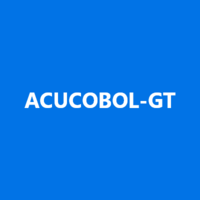Description
Introduction
The Internet of Things (IoT) is rapidly expanding, with billions of devices connected across various industries. However, managing and securing these devices efficiently remains a challenge. Traditional IoT networks often rely on centralized systems, which can be vulnerable to single points of failure, scalability issues, and security concerns. Blockchain technology offers a decentralized approach that enhances the security, reliability, and scalability of IoT networks. By integrating blockchain into IoT, we can create decentralized IoT networks (DIoT) where devices communicate directly with one another, eliminating the need for centralized intermediaries.
This course explores how blockchain technology can transform IoT systems by providing decentralization, enhanced security, and seamless scalability.
Prerequisites
- Basic understanding of IoT technologies, including IoT devices, sensors, and communication protocols.
- Familiarity with blockchain fundamentals such as distributed ledger, consensus mechanisms, and cryptographic functions.
- Knowledge of programming languages (e.g., Python, Solidity) and smart contract platforms (e.g., Ethereum).
- Experience with IoT platforms like Raspberry Pi, Arduino, or similar is helpful but not required.
- Basic understanding of network security principles and decentralization.
Table of Contents
- Introduction to Decentralized IoT Networks
1.1 What is a Decentralized IoT Network?
1.2 The Role of Blockchain in IoT Networks
1.3 Key Benefits of Decentralization in IoT
1.4 Centralized vs. Decentralized IoT Systems - Blockchain Fundamentals for IoT
2.1 Blockchain Technology Overview(Ref: Smart Contracts for IoT Blockchain Systems)
2.2 How Blockchain Supports Decentralization
2.3 Types of Blockchain Networks (Public, Private, and Consortium)
2.4 Consensus Mechanisms in Blockchain for IoT - Architecture
3.1 Overview of Integration
3.2 Key Components of Decentralized IoT Networks
3.3 Device Communication and Blockchain Integration
3.4 Smart Contracts and Automated Transactions in IoT - Security and Privacy
4.1 Enhancing Security
4.2 Protecting IoT Devices from Hacking and Tampering
4.3 Blockchain for Data Integrity and Privacy Protection
4.4 Managing Access Control in Decentralized IoT Networks - Scalability in Decentralized IoT Networks
5.1 Blockchain’s Role in Scaling IoT Networks
5.2 Overcoming Challenges in Scaling IoT with Blockchain
5.3 Sharding and Layer 2 Solutions for Scaling Blockchain in IoT
5.4 Optimizing Blockchain for High-Volume IoT Data Streams - Interoperability in Decentralized IoT Systems
6.1 Importance of Interoperability in IoT Networks
6.2 Blockchain for Cross-Platform IoT Communication
6.3 Standardization and Protocols for IoT Blockchain Integration
6.4 Bridging Legacy IoT Systems with Blockchain Technology - Use Cases of Blockchain in Decentralized IoT
7.1 Smart Homes and IoT Automation
7.2 Supply Chain and Inventory Management with IoT and Blockchain
7.3 Healthcare IoT: Securing Medical Devices and Patient Data
7.4 Automotive IoT and Blockchain for Vehicle-to-Vehicle Communication - Building Decentralized IoT Applications with Blockchain
8.1 Steps to Develop Decentralized IoT Applications
8.2 Blockchain Platforms for IoT Applications (Ethereum, Hyperledger, etc.)
8.3 Smart Contracts for IoT Automation
8.4 Tools and Frameworks for Developing Decentralized IoT Systems - Challenges in Implementing
9.1 Technical and Infrastructure Challenges in IoT Blockchain Integration
9.2 Energy Consumption and Efficiency Issues in Blockchain Networks
9.3 Data Latency and Real-Time Processing in IoT Systems
9.4 Regulatory and Legal Considerations for Decentralized IoT - Future
10.1 Emerging Trends in IoT and Blockchain Integration
10.2 The Role of Artificial Intelligence in Decentralized IoT Networks
10.3 Quantum Computing and its Impact on Blockchain and IoT
10.4 The Road Ahead - Conclusion
11.1 Recap of Key Concepts
11.2 The Future Potential
11.3 Final Thoughts and Next Steps for Implementing
Conclusion
This course represent the next frontier in IoT development. By removing intermediaries, enhancing security, and providing scalable solutions, blockchain enables IoT devices to operate autonomously in a secure and efficient manner. While challenges such as scalability, energy consumption, and regulatory compliance remain, the integration of blockchain with IoT offers unparalleled opportunities for innovation. As the technology matures, decentralized IoT networks will play a crucial role in industries ranging from healthcare and automotive to supply chain management, paving the way for more secure, scalable, and autonomous systems.







Reviews
There are no reviews yet.